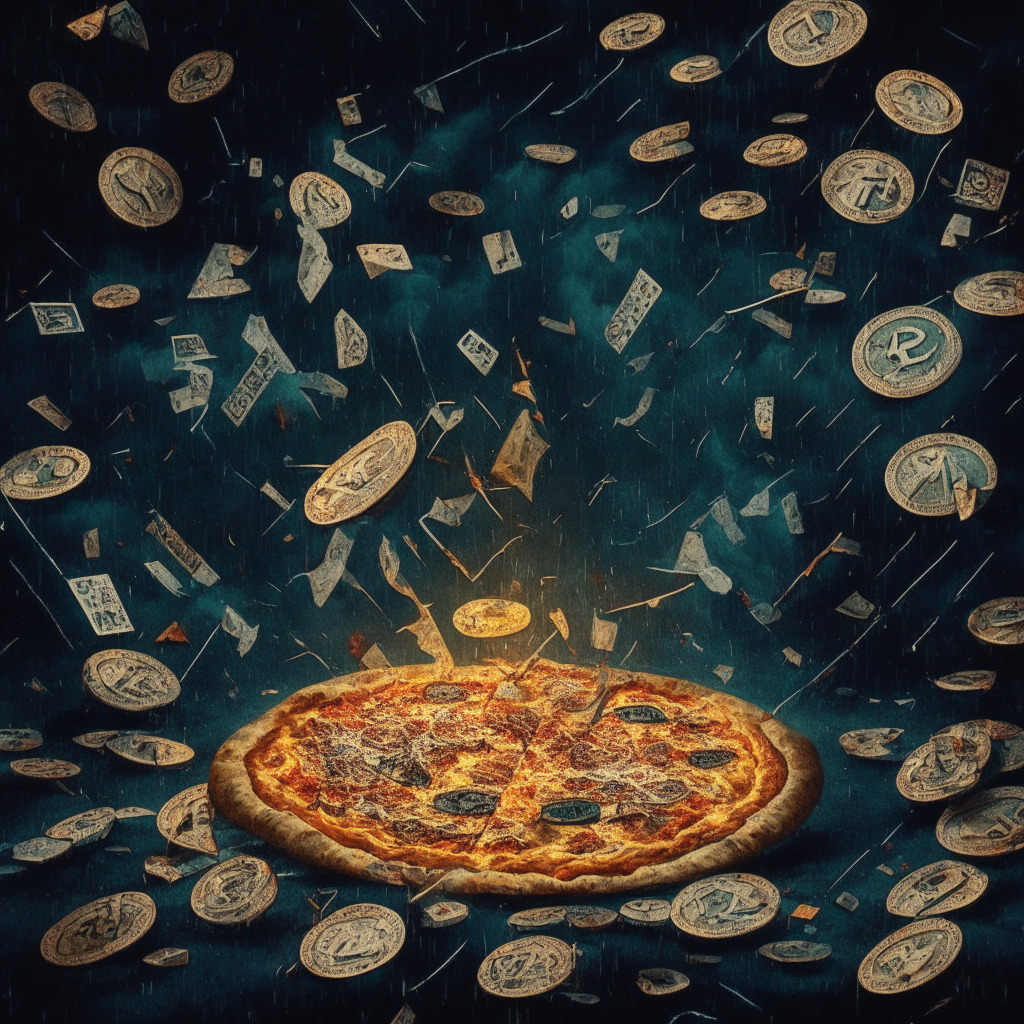It seems that Bitcoin Pizza Day has recently experienced a rather unsavory twist, with meme coin creators reportedly making a profit of over $200,000 through pizza-related rug pulls. This notable event marked the 13th anniversary of the alleged first commercial bitcoin transaction. Over the past 24 hours, data from dextool’s “live new pairs” has shown that 14 pizza-related meme coins have been issued, with four of them confirmed as rug pulls – schemes designed to steal money from investors using various techniques.
Furthermore, at least five other tokens are suspected of being honey pots, where an asset can only be sold to the contract creator, leaving buyers with tokens they cannot get rid of. Bitcoin Pizza Day is celebrated on May 22nd, commemorating the occasion in 2010 when computer programmer Laszlo Hanyecz purchased two pizzas for 10,000 bitcoins.
The first meme coin in this trend, pizza coin (PIZZA), had a lifespan of only eight minutes before developers changed the sell tax rate, making it impossible for investors to sell their holdings. In total, 34 traders purchased the token and experienced a collective loss of 0.9892 ETH (equivalent to $1,800).
However, this setback did not deter investors who moved on to tokens named bitcoin pizza and pizza inu, resulting in total losses surpassing $12,000. Ethpizza and bpizza followed these coins, with the former reaching a market cap of $40,000 and the latter skyrocketing to over $100,000. Both tokens became unsellable when the contract owners paused transfers and sales.
Several methods are employed by developers to “pull the rug” on projects. One strategy involves adding a modifiable sell tax to the smart contract, granting the contract owner the power to increase the tax to a level rendering the tokens unsellable. Another more common tactic is for a smart contract owner to hold the majority of a token, waiting for its price to rise before selling it into newly formed liquidity from unsuspecting investors.
The eagerness of investors to purchase these tokens, which possess no underlying value, seemingly stems from the recent “meme coin mania” after pepe reached an impressive market cap of $1 billion. It appears that investors aim to catch the next hype-driven token in a market filled with unlimited downside risk. Are such schemes a worrying trend among some within the crypto community, or do they simply exemplify the vulnerabilities that can arise when engaging with emerging technologies and markets? Only time will truly reveal the answer to this critical question.
Source: Coindesk




